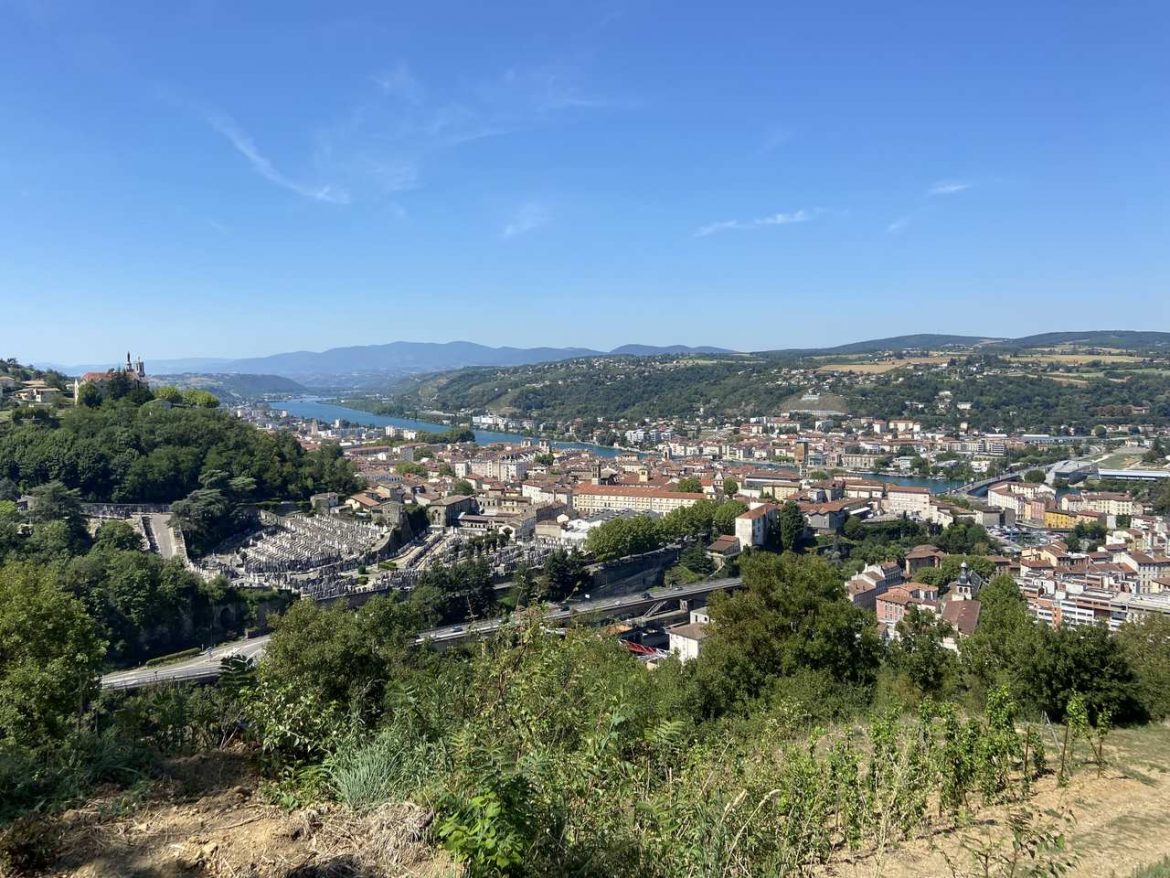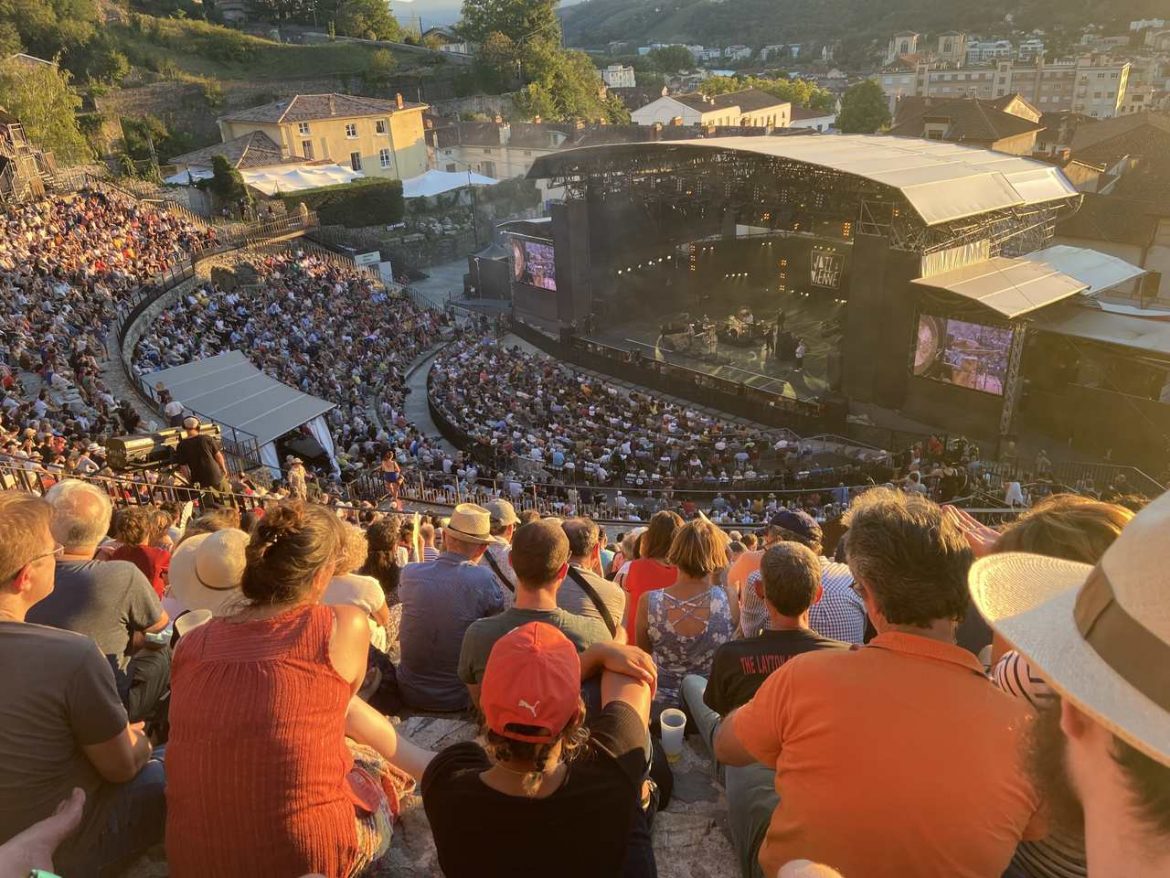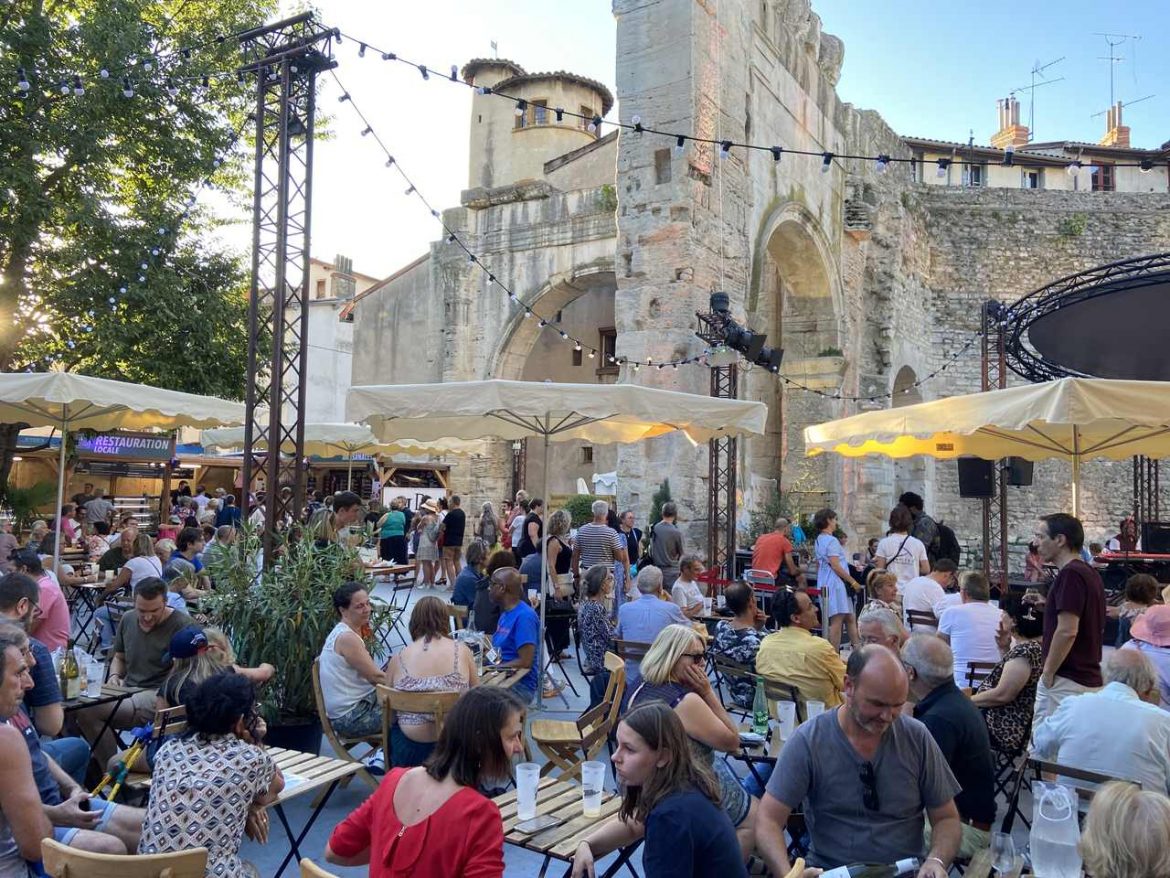You can see what the Romans liked about Vienne, literally. The amphitheatre on the banks of the Rhône used to seat 13,000 in their day, and the view from the top, built into a steep, steep hillside shows what southern France is all about.
In this pretty town – 20 miles south of Lyon, 150 miles north of the Riviera – the river makes a sharp bend, cosseted by hills with a wealth of south-facing slopes now, as then, covered with vineyards.
The Romans
Vienne was a major Roman town and harbour on the Rhone, the gateway to the heart of France from the Mediterranean. The centre stage is the amphitheatre, often called Theatre Antique, a semi-circular stone giant built into steep south-facing Mont Pipet around 50AD. It once seated 13,000 and still accommodates 8,000 with river views for plays and music, including the annual Jazz à Vienne festival.
Look down from the hilltop, accessed by a narrow, snaking road crowned by little Notre Dame de Pipet church.
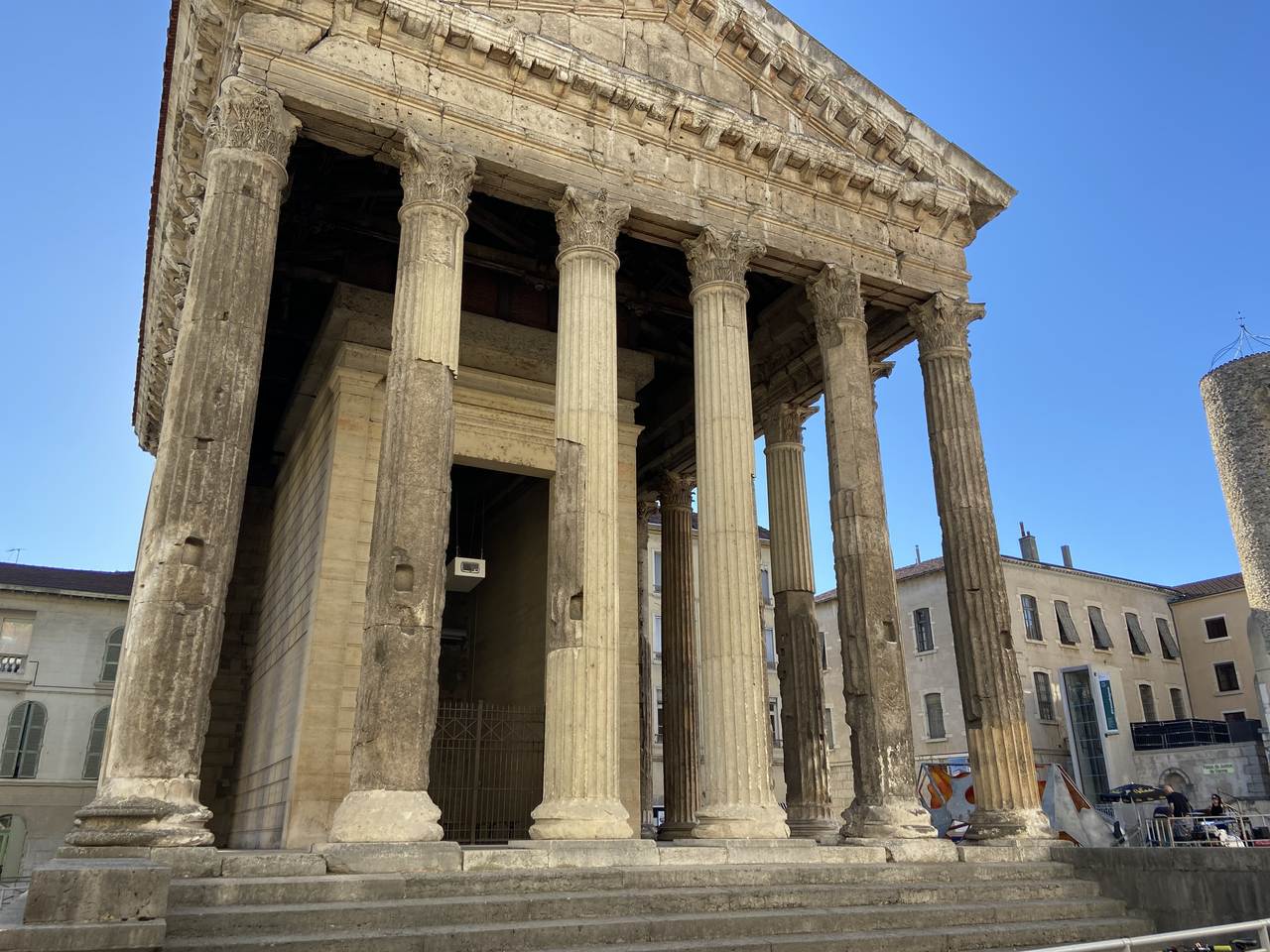
Temple of Augustus and Livia
In town the Temple of Augustus and Livia, built by the emperor Claudius, looks madly out of place on a tiny square amid restaurants and shops. A couple of streets away is Jardin de Cybèle, public gardens amid arches and remains of the forum. Nearby is St Peter’s, one of France’s oldest churches that almost 150 years ago was turned into a museum housing Gallo-Roman stone relics. In the street stands a stone pyramid from days of the Roman circus, around which charioteers used to race.
Across the river, technically in the town of Saint-Romain-en-Gal, is one of France’s biggest Roman museums, a striking glass building that occupies a city block of what was Vienne’s living quarters and which is now a huge excavated site with house and bath remains plus gardens featuring ancient varieties of plants including vines. The museum is filled with rescued mosaics and models of how Vienne would have looked with its extensive quayside and warehouses.
Explore the hidden gems
Hidden away behind little doors are spots such as the Cloister of Saint André-le-Bas, stone columns from the 6th or 7th century with pretty planting. Small group guided tours, bookable via the tourist office, take in hidden courtyards and even more hidden medieval and Roman cellars and arches.
Take a walk alongside the little River Gère which meanders down from the hills under a medieval stone bridge and past industrial buildings, one of which houses the Textile Industry Museum championing the industry that, with its woollen Renaissance fabrics, dominated Vienne’s economy from the 18th to the 20th century.
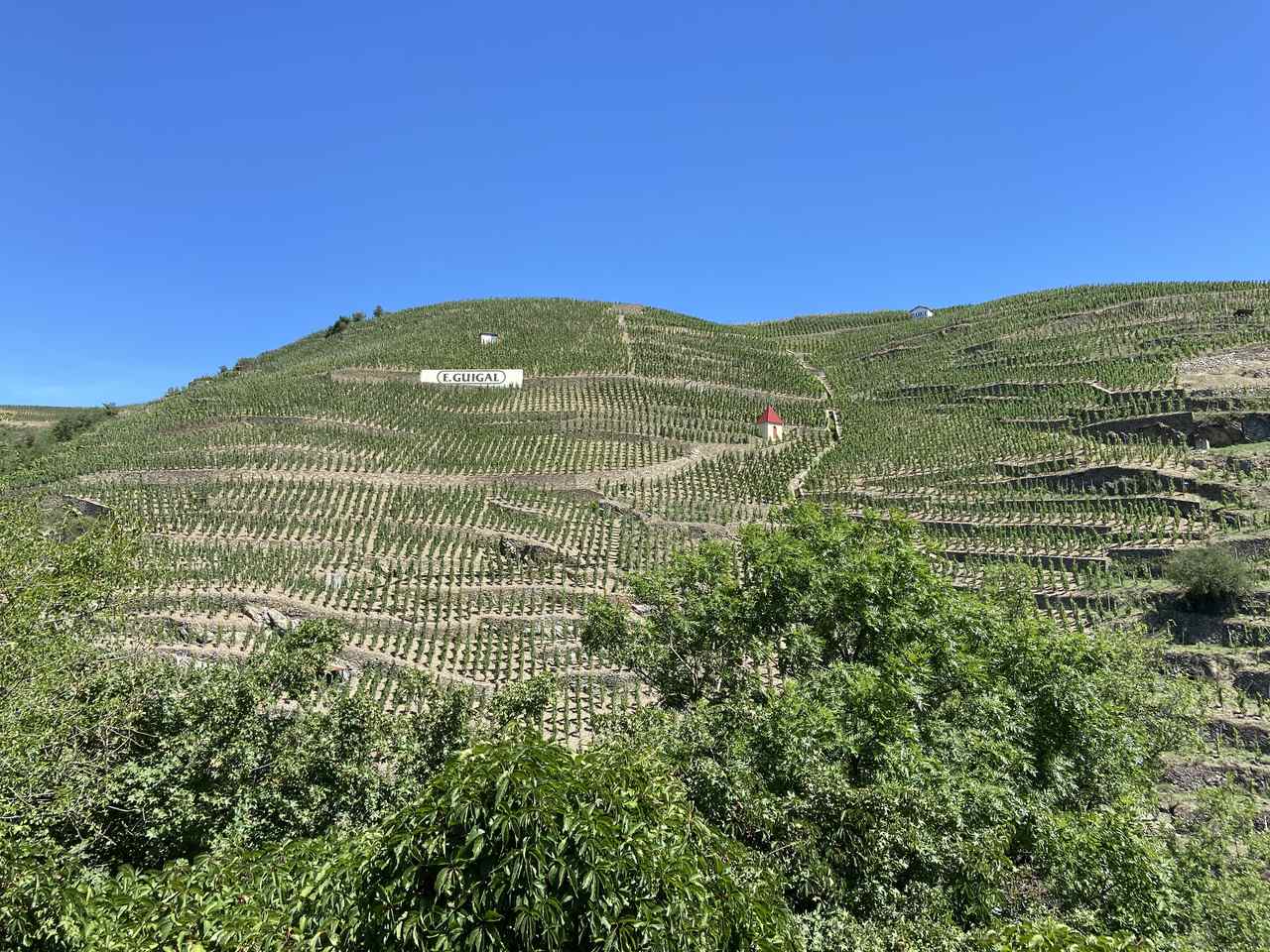
Guigal vineyard
A four-mile riverside walk or cycle from town is Le Caveau Du Château E.guigal, a dramatic chateau that is the public face of the Guigal wine dynasty with its sleek shop, subterranean wine museum and beautiful lawned garden for the Rhone tastings, from doorstep Côte-Rôtie and Condrieu to Crozes-Hermitage and Châteauneuf-du-Pape farther south. Tours by car (or Segway!) take you high into the vineyards.
A bite to eat
Vienne is packed with excellent, unassuming restaurants; tree-lined Cours Romestang is full of tables on the grassy central reservation and the narrow, pedestrians-only Rue de Clercs simply full. Side by side in Rue de la Table Ronde, little more than an alley, two highly-rated restaurants are neighbours with raised outdoor terraces to take account of the slope towards the river.
Restaurant l’Estancot specialises in ‘criques’, potato pancakes – rather like posh hash browns, but served as extravagant main meals with fois gras, scallops and prawns, steak or other delights – my Cote Mer featured seabass, red mullet and monkfish in a rich beurre blanc (€28). Next door is Alquimia which revels in the word ‘gastronomique’. Evening is a seven-course tasting menu; my lunch, €26, featured a cold corn cream soup with foam and toasted hazelnuts followed by an inspired risotto made from quinoa topped with chorizo and Bayenne ham.
In the nearby hills is Le Cottage, a smartly reimagined farmhouse hotel run by chef Philippe Girardon whose Michelin-starred Gastronomic Restaurant is close by in a 17th-century chateau, a rest home for the bishops of Lyon, now a hotel; the Cottage restaurant, also known as Le Bistrot, with sun terrace is the dressed-down version but only slightly; Girardon (who 40 years ago worked by the Thames with the Roux brothers at Bray’s Waterside Inn) served up a fine lunch – courgette spaghetti with langoustine cream followed by hake in sauce on a polenta bed, all for €32
On your bike around Vienne
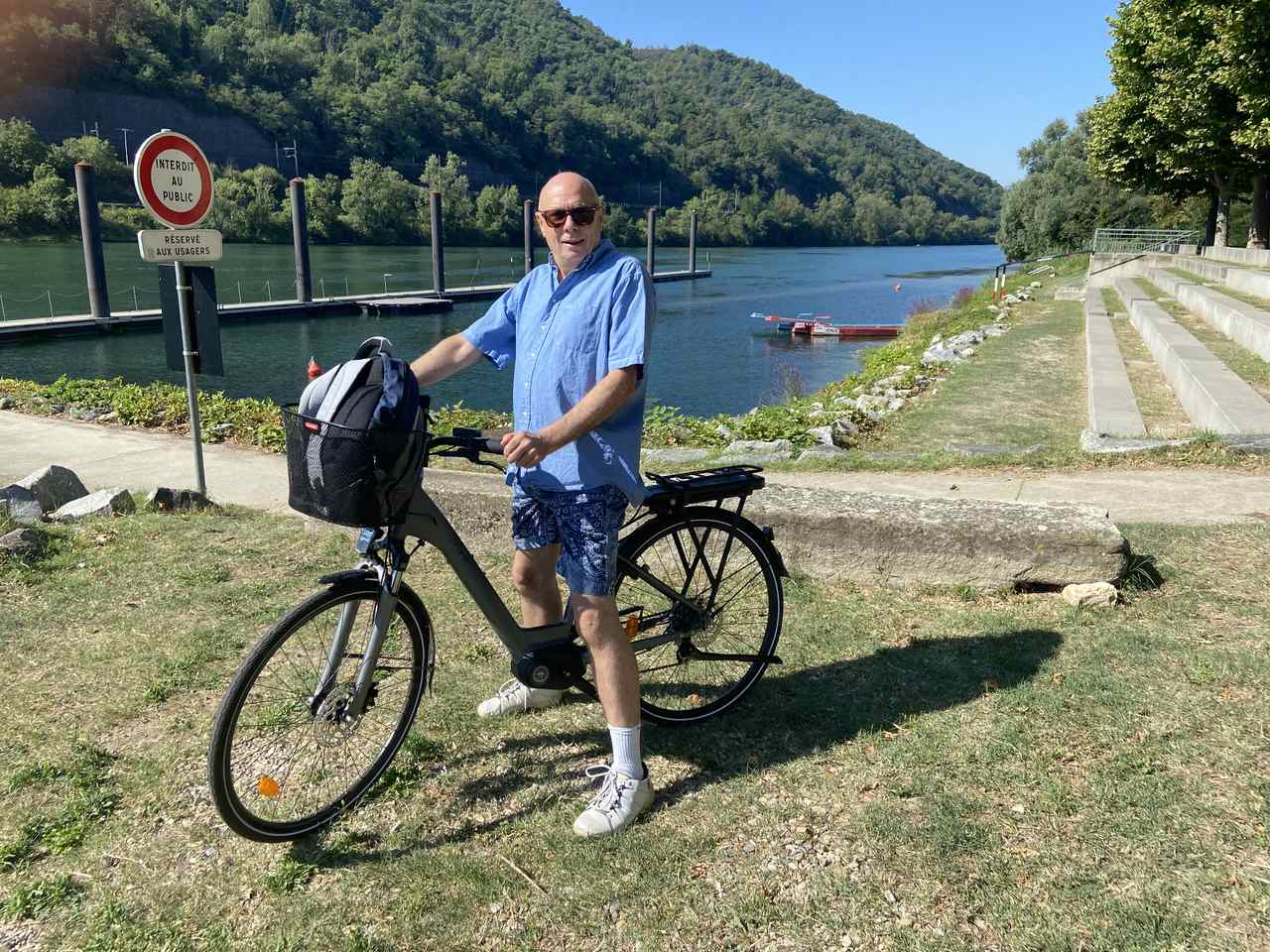
E-biking
The ViaRhôna is a 510-mile riverside walking and cycle path that runs from Geneva to the south coast of France. Head north from Vienne and it’s only 20 miles to La Confluence, where the Rhône and Saône meet in Lyon. The riverfront tourist office (with a 30ft-high interior wall of wine bottles and wines to buy by the glass) has a fleet of e-bikes that are free for the day if you’re staying in a partner hotel, which is most of them, €40 otherwise.
Head south and you meander past vineyard after vineyard, spots where you can dip your feet into the cooling waters and places with beautiful vistas. No matter how hot it is (and I was there at the start of the heatwave) there’s always a pleasant breeze as you whiz along amidst chateaus, forests, parks and wine estates.
Magic moments
The annual Jazz à Vienne festival runs two weeks each July with the world’s top jazz artists playing on a Glastonbury-like stage to 8,000 people filling the Roman theatre. It’s an amazing sight as the sun drops. I was there for the last three days and saw bill-toppers Fred Wesley (a trombonist once soul king James Brown’s right-hand man), funky crooner George Benson and avant-garde keyboard player Herbie Hancock. Tickets are kept to a very reasonable €49 each day, including the final evening which continues until dawn with a host of well-known names.
The city comes alive with bands playing outside restaurants and in other spots including Jardin de Cybèle, which is turned into a free-to-enter bar, restaurant and venue.
Where to stay
The Grand Hôtel de la Poste, a listed 18th-century coaching inn, is independently run, in colourful Cours Romestang, around the corner from the river and rail station. The cosiness of Clochmerle-era France with vintage furniture, trendy retro touches and exhibitions by local artists.
The hotel serves an excellent breakfast buffet (featuring the truly supreme jams of Philippe Bruneton, proclaimed France’s best jam maker and whose shop and tiny kitchen can be visited at Longes, 12 miles away) and a hideaway outdoor bar.
Doubles from £95.00
CHECK AVAILABILITY
The 2 star ibis budget Vienne Sud is a reliable budget hotel that has a great location in Vienne, 1,000 yards from Roman Theater (Theatre Romain).
Doubles from £62.00
CHECK AVAILABILITY
Fact File
FLY: There are regular flights from Heathrow and Gatwick to Lyon with British Airways and easyJet.
GET AROUND: The Rhonexpress tram takes 30 minutes to Lyon’s Part-Dieu station. A Metro hop away, Lyon Jean Macé station has regular trains to Vienne taking 20 minutes.
MORE INFO: en.vienne-condrieu.com

